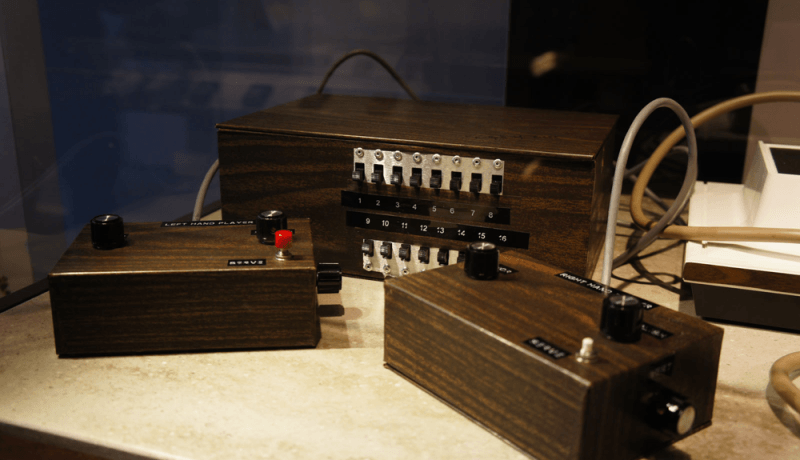Classically Trained... With a 1970s Game Console
June 22, 2015
on
on

The Brown Box
This article originally appeared in Elektor.POST #101 on December 19, 2014. Don't miss any updates, take out a free membership to Elektor.POST.
Once upon a time, video games were not called video games, but “computer games” and they could only be played on mainframes like the PDP-1, way beyond the resources of poor Joe public. But things have changed…
In 1951 while he was working in a small electronics company in the Bronx (New York) German-born American engineer Ralph H. Baer had the brilliant idea of using a TV screen to play games. His boss wasn’t impressed and didn’t think the idea would catch on. It took another 15 years before Baer got the chance to put the whole concept together, this time working for Sanders Associates in New Hampshire. He was able to get more funding to develop the idea further and named his first prototype “The Brown Box” because, well, it was held together with brown tape. Later in 1971, the system was licensed to Magnavox and the ‘Odyssey’ finally hit the shelves in August 1972 when it became the world’s first videogame console. After attending a demo of the Odyssey, Nolan Bushnell of Atari was impressed but thought the ping-pong game could be improved, hmm… maybe add some sounds and make the game play more intuitive… Ever heard of Pong? ;)
Although it’s built from discrete components, and the video output is obviously analog, the Odyssey is actually a digital design, using Diode-Transistor Logic (DTL, pre-TTL indeed). Like later consoles, games are changed by means of cartridges, but these early cartridges didn’t contain any active component or ROM. Instead they just had jumpers to make different combinations within the logic circuit of the Odyssey itself to generate other on-screen patterns.
Sadly, last year, at the age of 92 Mr. Baer passed away. In his lifetime he was able to witness how his original seed of an idea grew into interactive entertainment and went on to become today’s multi million dollar industry. With a few days holiday coming up, as a mark of respect, I think we are obliged to blow the dust off all those old consoles and veg out in front of the TV for a few hours retro gaming!
Picture: © Parker Dillmann | The Longhorn Engineer
This article originally appeared in Elektor.POST #101 on December 19, 2014. Don't miss any updates, take out a free membership to Elektor.POST.
Once upon a time, video games were not called video games, but “computer games” and they could only be played on mainframes like the PDP-1, way beyond the resources of poor Joe public. But things have changed…
In 1951 while he was working in a small electronics company in the Bronx (New York) German-born American engineer Ralph H. Baer had the brilliant idea of using a TV screen to play games. His boss wasn’t impressed and didn’t think the idea would catch on. It took another 15 years before Baer got the chance to put the whole concept together, this time working for Sanders Associates in New Hampshire. He was able to get more funding to develop the idea further and named his first prototype “The Brown Box” because, well, it was held together with brown tape. Later in 1971, the system was licensed to Magnavox and the ‘Odyssey’ finally hit the shelves in August 1972 when it became the world’s first videogame console. After attending a demo of the Odyssey, Nolan Bushnell of Atari was impressed but thought the ping-pong game could be improved, hmm… maybe add some sounds and make the game play more intuitive… Ever heard of Pong? ;)
Although it’s built from discrete components, and the video output is obviously analog, the Odyssey is actually a digital design, using Diode-Transistor Logic (DTL, pre-TTL indeed). Like later consoles, games are changed by means of cartridges, but these early cartridges didn’t contain any active component or ROM. Instead they just had jumpers to make different combinations within the logic circuit of the Odyssey itself to generate other on-screen patterns.
Sadly, last year, at the age of 92 Mr. Baer passed away. In his lifetime he was able to witness how his original seed of an idea grew into interactive entertainment and went on to become today’s multi million dollar industry. With a few days holiday coming up, as a mark of respect, I think we are obliged to blow the dust off all those old consoles and veg out in front of the TV for a few hours retro gaming!
Picture: © Parker Dillmann | The Longhorn Engineer
Read full article
Hide full article



Discussion (0 comments)